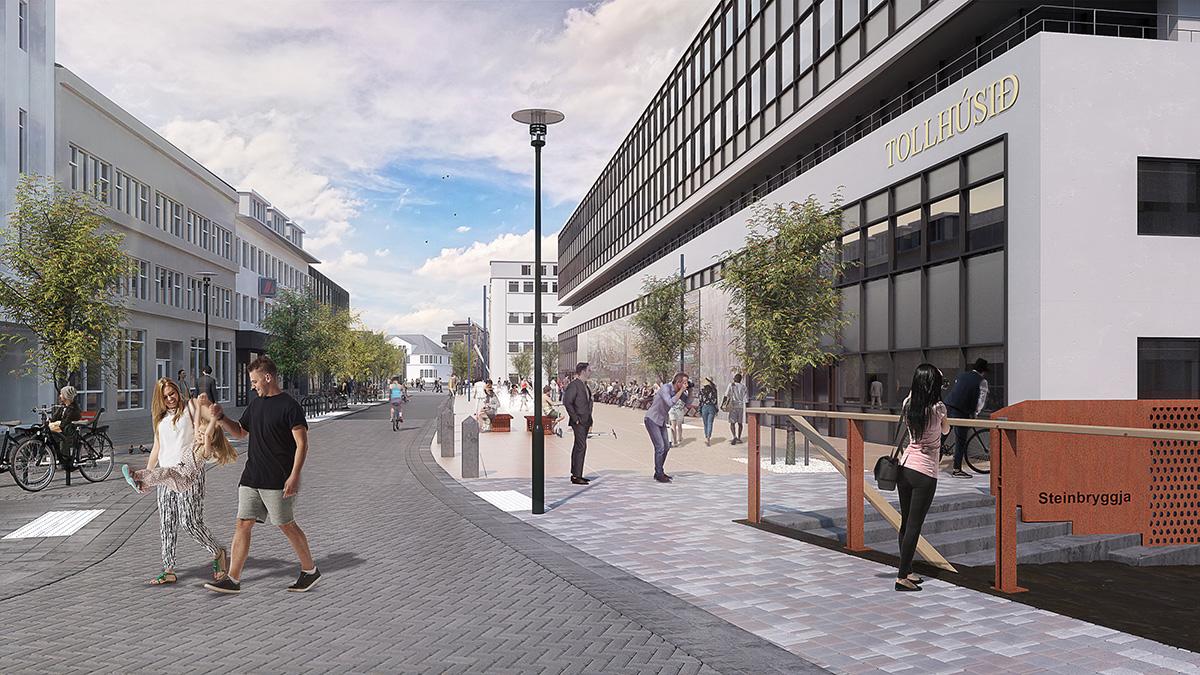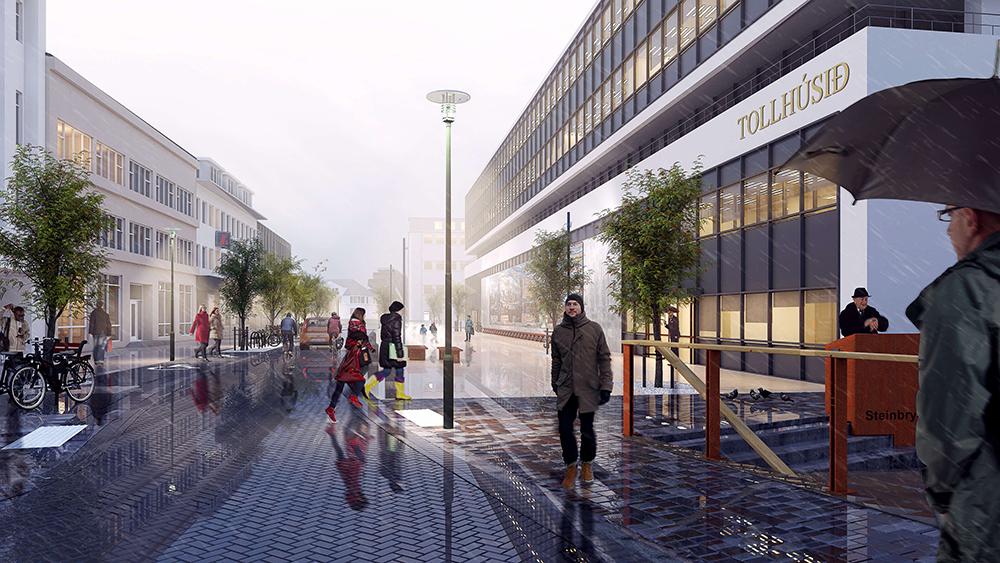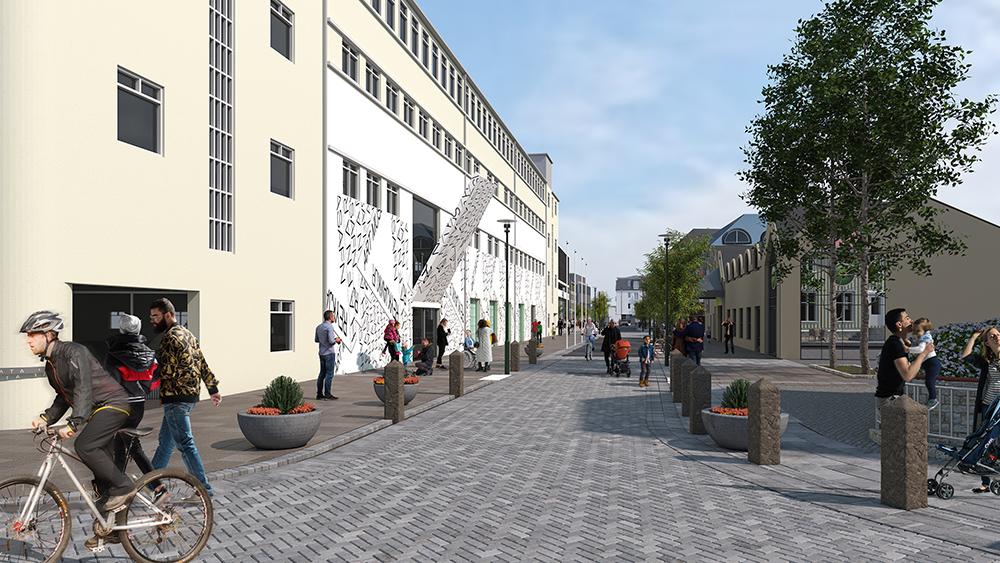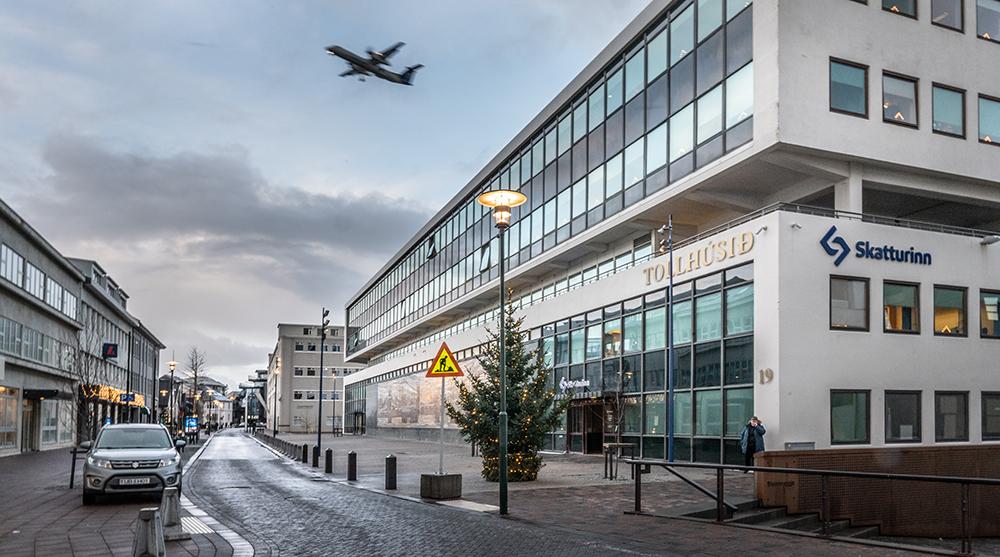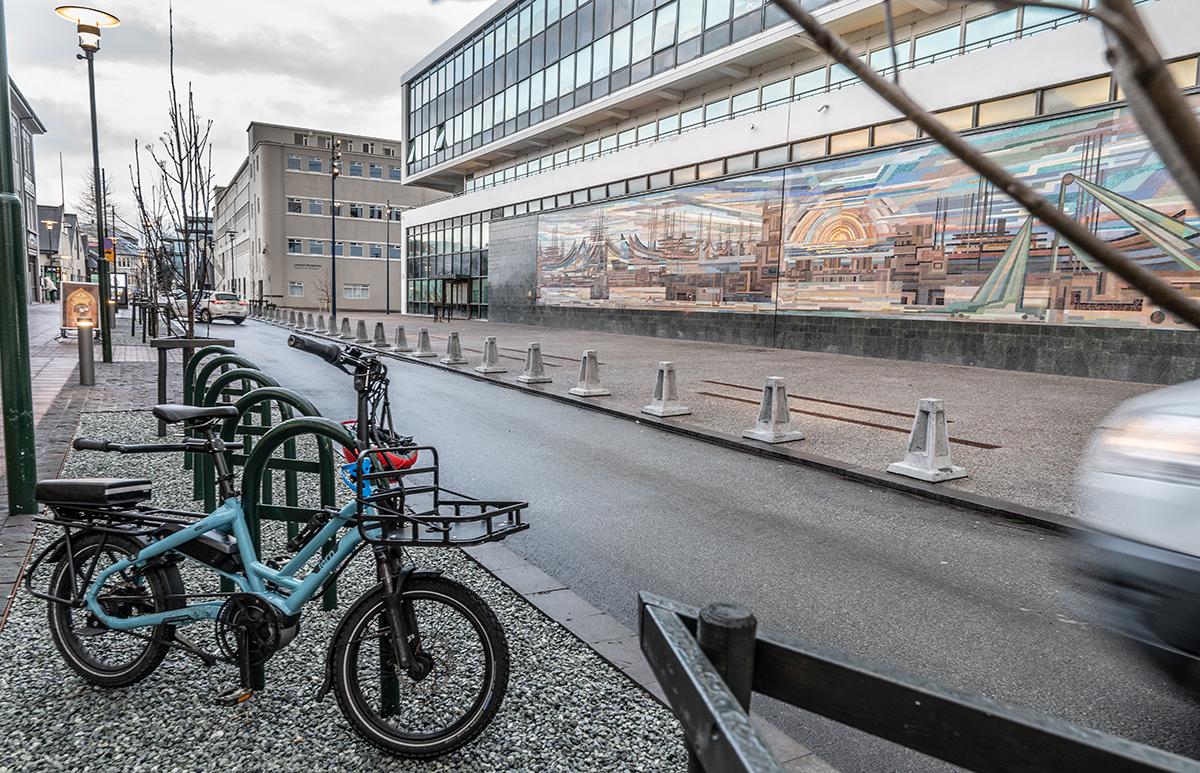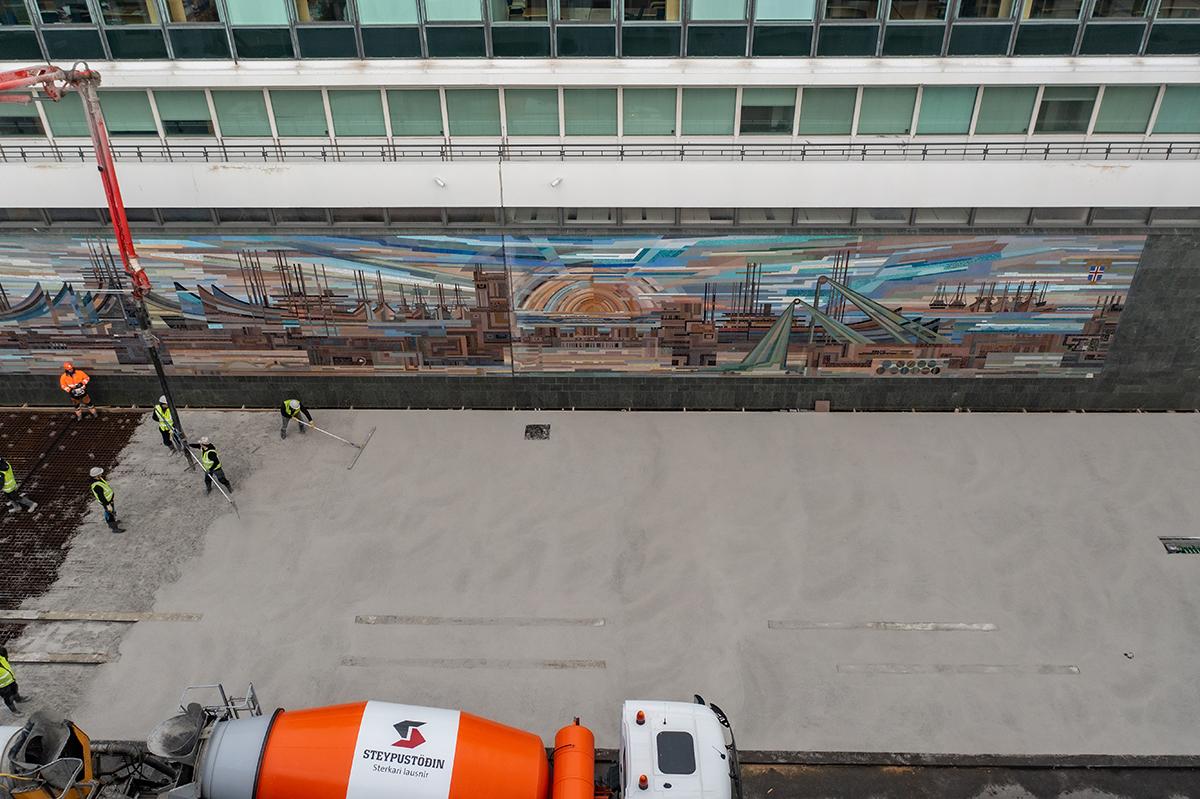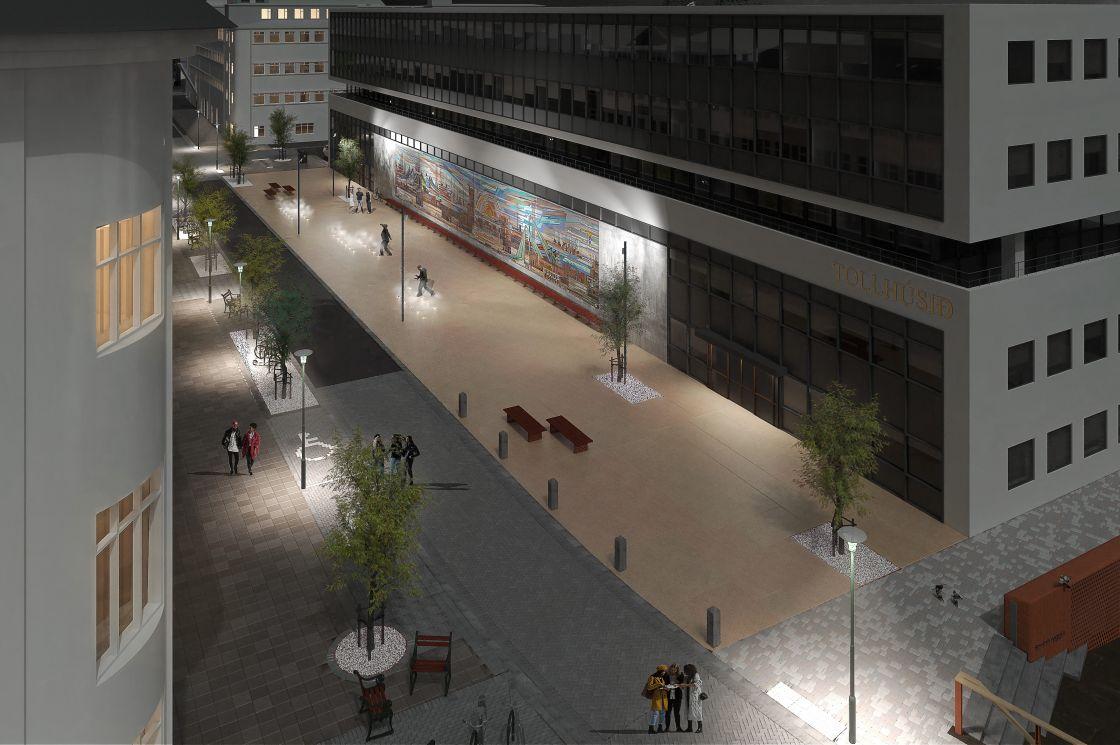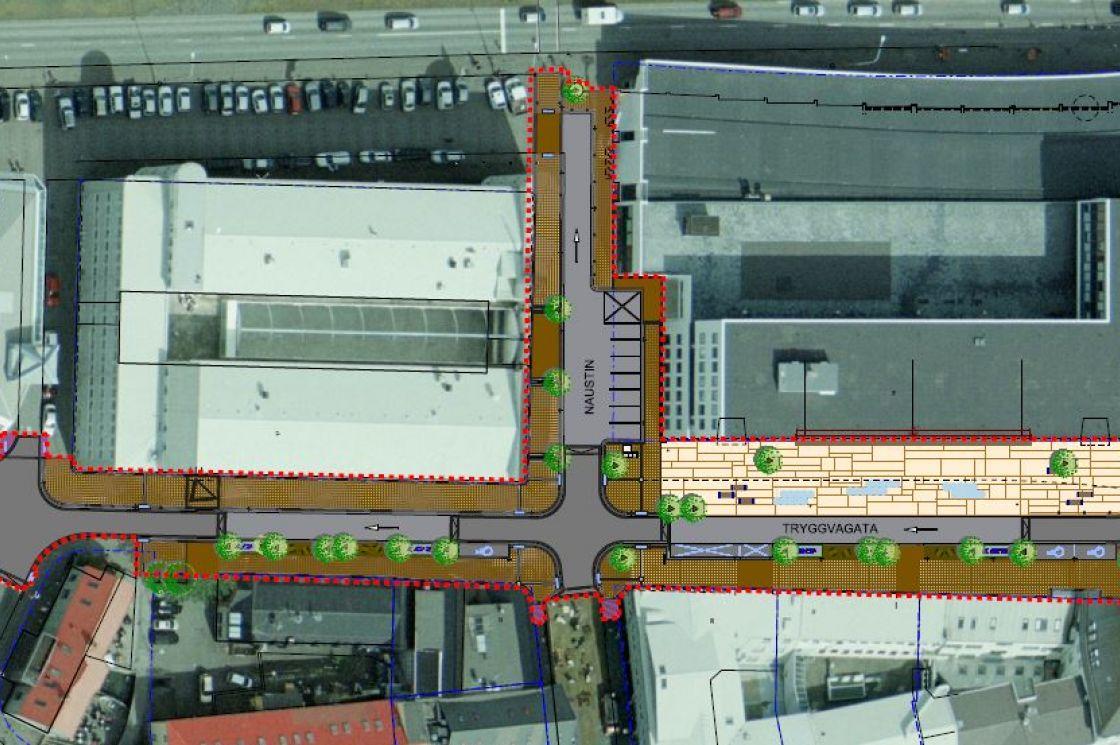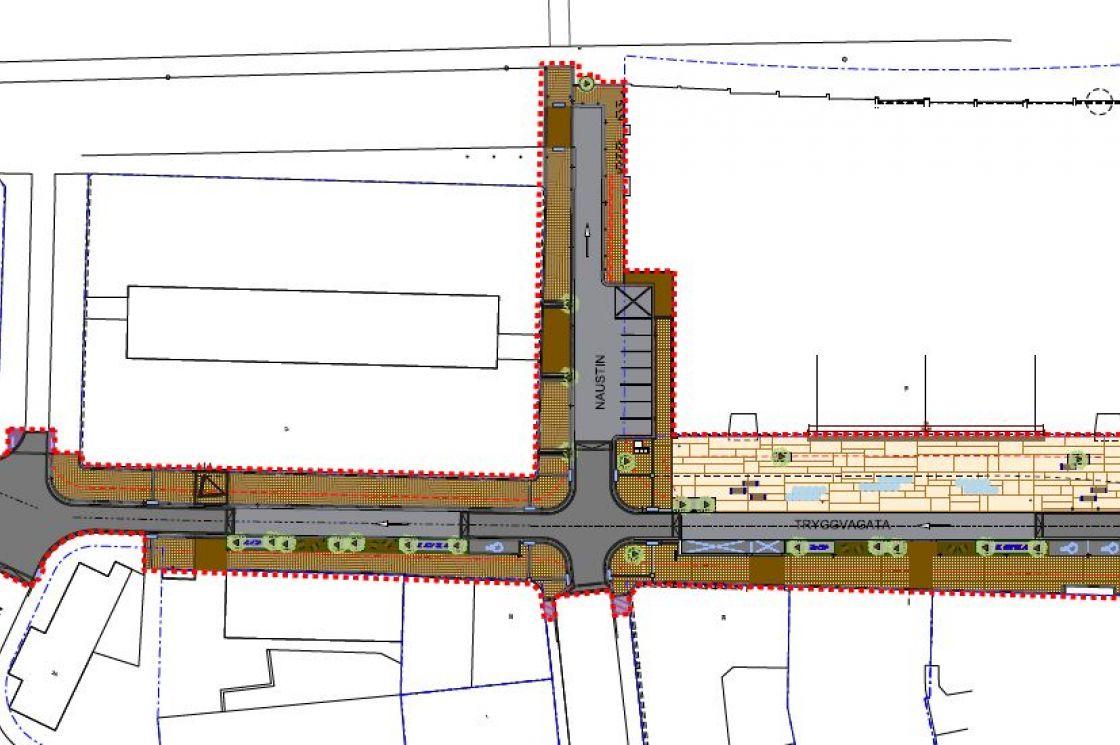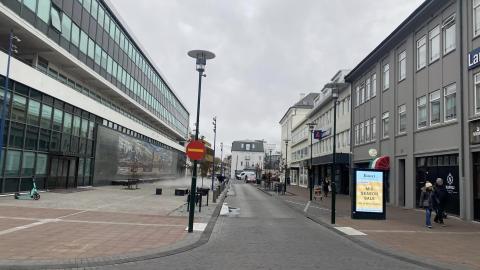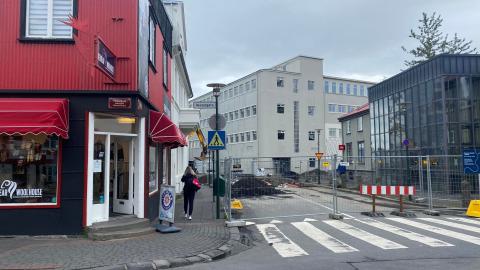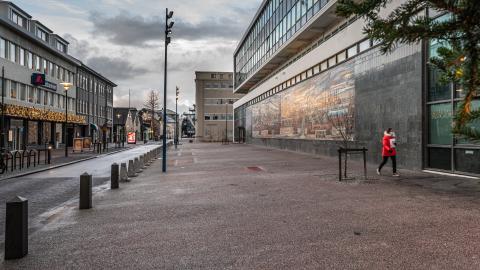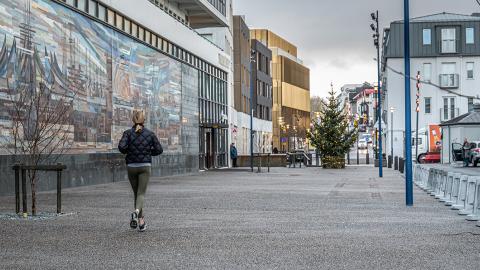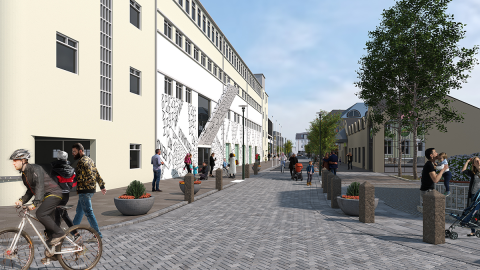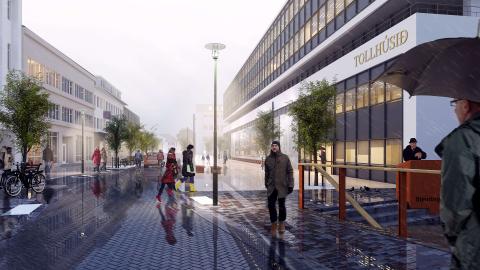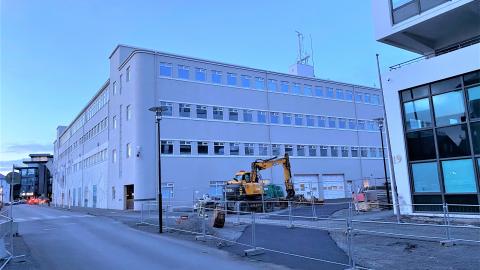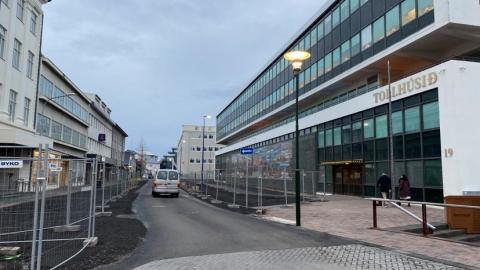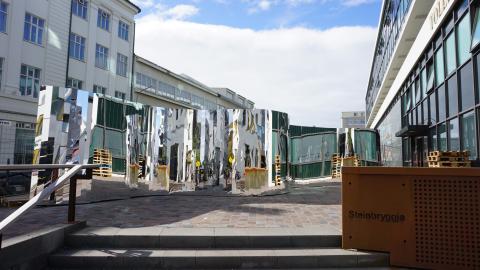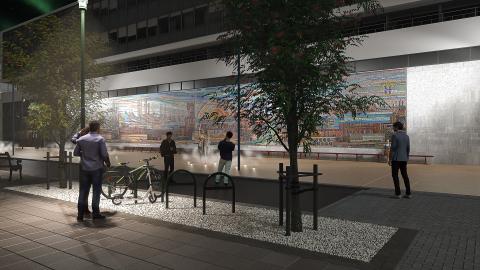Tryggvagata
Reykjavík's city center has seen significant enhancements in recent years, with the addition of new streets and buildings. Older streets have also undergone revitalization. The Tryggvagata project is part of an effort to make My Reykjavík better, more people-friendly, more attractive, and more accessible for active transportation.
Why?
The renovation of Tryggvagata continues, including both underground utility work and a new, attractive surface. The project will improve the street's appearance and enhance accessibility for visitors, residents, and businesses, as well as facilities for goods delivery. The result will be a more impressive and accessible Tryggvagata with a sun-filled leisure area. After completion, the street will better facilitate vibrant daily life in the area, supporting the diverse services available there.
When?
The project will be carried out in three phases. Phase one, which began in 2020, covers Tryggvagata in front of the Customs House and Naustin. Phase two, set for 2021, extends Tryggvagata to Grófin. The third phase, focusing on Grófin, is scheduled for spring and summer 2022.
Tryggvagata and Naustin - reconstruction 2020-2022
Tryggvagata and Naustin
Tryggvagata will be reconstructed between Pósthússtræti and Grófin. Naustin will be reconstructed between Tryggvagata and Geirsgata.
Work will continue on beautifying and reconstructing Tryggvagata. From the reconstructed Bæjartorg and Steinbryggja, work will progress westward to Naustin. The sunny area in front of the Tollhúsið (Customs House) will be transformed into an impressive public space. Naustin will also be reconstructed from Tryggvagata to Geirsgata. The segment from Naustin to Grófin is slated for 2021, with work on Grófin itself scheduled for spring 2022.
The reconstruction of Tryggvagata from Pósthússtræti to Grófin is estimated to cost 450 million króna. The project is being carried out in collaboration with Veitur Utilities.
Gerður Helgadóttir's mosaic on the Customs House
Gerður Helgadóttir's mosaic on the Customs House will be better showcased after the construction is complete. Below the artwork, a sun-drenched square will provide an ideal leisure area for pedestrians. The area will also feature small mist sprayers, adding a playful and mystical element to the space.
The mosaic
The mosaic on the south side of the Customs House was installed nearly 50 years ago, in the summer of 1973. Gísli Halldórsson, the building's architect, said upon the artwork's arrival that it would enhance Tryggvagata's appearance. His words ring true, and the effect will be even more pronounced once construction is complete. The artwork will be illuminated, allowing the mosaic stones to be better appreciated on this 142-square-meter surface.
Gerður was a pioneer in three-dimensional abstract art in Iceland and a trailblazer in glass art. The artist passed away two years after completing the Customs House work, at just 47 years old. Her legacy will endure through the artwork, now alongside a beautiful, green, and sun-filled square.

Attractive urban character
Vibrant, diverse public spaces and an attractive urban character guide this project, aligning with the main objectives of Reykjavík's municipal plan. The recently approved land-use plan for Tryggvagata emphasizes these aspects of the municipal plan while significantly enhancing environmental quality. Street architecture and art will become more prominent, and pedestrians will enjoy more space.
Reykjavík City and Veitur Utilities are collaborating on new construction procedures for the city center. Maintaining good accessibility during construction and providing useful information throughout the project are top priorities.
Water, heating, and electrical lines will be replaced. Many of these pipes are aging, with the wastewater and cold water pipes dating back to 1925, having served downtown residents and businesses for nearly a century.
Tengdar fréttir
-

-

-

-

-

-

-

-

-

-

Information
We will strive to provide good information sharing during the construction period.
- Department of Environment & Planning, Borgartún 12-14 105 Reykjavík Tel. 411 1111
- Veitur Utilities, Bæjarháls 1, 110 Reykjavík phone 516 6000
For any questions, please email tryggvagata@reykjavik.is.
